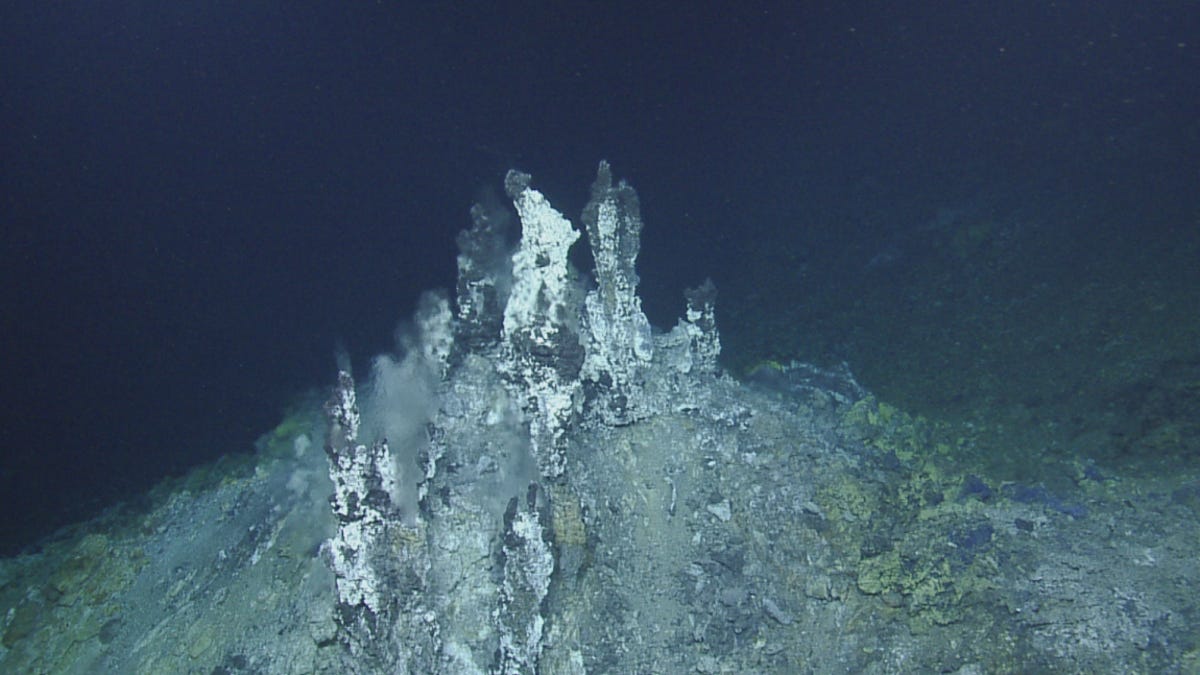Extreme deep-sea conditions could support life on Earth, other alien worlds
Scientists say life can survive surprisingly extreme seafloor settings with the right heating.

A chimney structure from the Sea Cliff hydrothermal vent field located more than 8,800 feet (2,700 meters) below the sea's surface at the submarine boundary of the Pacific and Gorda tectonic plates.
Life can survive, and even thrive, in the deepest, darkest places underwater. That's the key takeaway of a new study that finds specific types of seafloor vents might actually create an unlikely habitat for certain types of life.
"On land, in the oxygen-rich atmosphere of Earth, it is familiar to many people that making the molecules of life requires energy," said Arizona State University professor Everett Shock in a statement. "In stunning contrast, around hydrothermal vents on the seafloor, hot fluids mix with extremely cold seawater to produce conditions where making the molecules of life releases energy."
By using thermodynamic modeling and data from the genome of a single-celled organism called Methanocaldococcus jannaschii that dwells in deep-sea vents, the scientists determined vents made of rock low in silica -- also known as ultramafic-hosted systems -- could allow the microscopic life forms to thrive. Vents are essentially fissures on the bottom of the ocean. The work is published in the journal JGR Biogeosciences.
"This finding provides a new perspective on not only biochemistry but also ecology because it suggests that certain groups of organisms are inherently more favored in specific hydrothermal environments," said co-author Jeffrey Dick at Central South University in China.
The research reaffirms the old maxim that "life finds a way" and adds some detail to a growing catalog of extremophile species capable of surviving crazy environments ranging from freezing temperatures and high doses of radiation to the vacuum of space.
It also has implications for the search for life beyond Earth, as the moons Enceladus, Europa and other worlds in our solar system with subsurface oceans could contain similar vent systems that may be supporting alien life.
"As we explore," Shock said, "we're reminded time and again that we should never equate where we live as what is habitable to life."

